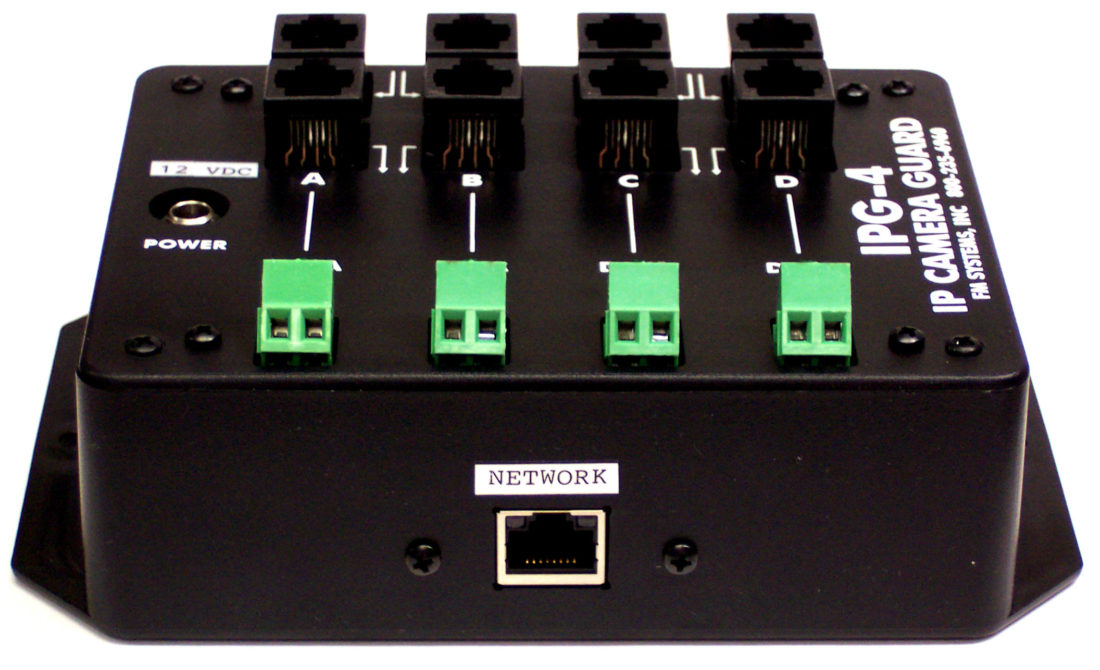HD-TVI AND THE TSSA VIDEO LOSS RULING
HD-TVI AND THE TSSA VIDEO LOSS RULING
BY: Don McClatchie
For those who are doing CCTV installations in Canada there is a ruling by the TSSA “Technical Standards & Safety Authority” Clause 5.1.2(b) of the Liquid Fuels Handling Code that states: Control equipment for the self-serve dispensers shall be located such that the self-serve attendant has an unobstructed view from the console of all dispensing operations”. Fuels Safety interprets this clause to mean that the attendant must be able to clearly see the filling operation at all dispensing positions. It can be achieved either through direct and clear line of vision for the attendant or by a video monitoring system that has a constant or fixed view of all dispensing positions. A monitor that switches views every few seconds or a view that meets the criteria for clarity by zooming in on the fueling position is therefore unacceptable.
The image displayed on the monitor must be of an adequate size and clarity to allow for effective surveillance. If the attendant can read the equivalent front of a license plate, held in the fueling area, or identify a 5 Liter fuel can for existing sites, Fuels Safety will consider that size and clarity of the image as acceptable.Installations done after January 2007 must follow these requirements:
1. Every filling position must be covered by a camera.
2. Cameras must meet the license plate clarity test.
3. Cameras must have a video loss shutdown function.
4. A camera can cover more that one filling position provided it meets the license plate clarity Test *.
5. Filling positions may be located within 360 degrees and 50m of the attendant console and within the facility lease property line.
* Clarity Test means that the attendant shall be able to identify the jerry can or read the equivalent front of a license plate *.
Many CCTV installers are using the new HD-TVI video cameras at the gas pumps to insure a High Definition video image to help meet the “Clarity Test”. These cameras come in many styles and Pixel counts, some with 1080p lines of resolution which gives a very impressive and clear image of the pumps even over long distances.
Requirements 1,2 and 4 will be accomplished with the installation of video cameras hopefully HD cameras that provide the required view. However number 3 will require some equipment that you may not have used before. Number 3 is the requirement is for video loss detection and shutdown of the fueling pumps when the video is not being delivered to the attendant for viewing. An inline video detector that has a relay output will do a fine job of meeting the requirements of the TSSA directive.
If you are going to use analog video cameras, or the new HD-TVI cameras you can install a product called CG-4 to meet the requirement of video loss detection. This product is easy to install and will monitor the HD-TVI video stream and operate a relay for external contacts to control or alarm the pumps so that the pumps will not dispense fuel unless the video camera is working. In this way your system will meet the requirements of the TSSA guideline Video Monitoring at Self-Serve Facilities.
The CG-4 Camera Guard system supervises the continuity of four separate video signals from CCTV analog cameras and also the new HD-TVI cameras all in the same unit. This supervisory system will identify the loss of a video signal due to removal of the camera, loss of power to the camera, a camera cable disconnect or covering the camera lens. The CG-4 supervisory system continuously displays the “video on” condition of 4 cameras, with individual L.E.D. indicators for each video channel.
Normally Open or Normally Closed Alarm contacts are provided for each channel to send an alarm or activate equipment when loss of video occurs. These contacts are field programmable for Normally Open or Normally Closed contact operation. This unit can be connected to a local alarm to alert monitor personnel that a camera is being tampered with or send a message to a remote site by connecting the alarm contact output to external dialing equipment.
The CG-4 will identify tampering or failure of cameras when it occurs, reducing the liability associated with extended and undetected loss of area security when cameras are rendered in-operative without notification. The CG-4 increases the level of security provided by the CCTV or HD-TVI system.
The CG-4 Camera Guard is connected between the camera and the Monitor equipment, in the video path. It provides a “Loop-through Input” that will not affect the picture quality or the video level. The unit detects a loss of SYNC that indicates the power to the camera is off, the coaxial cable is “disconnected” or the Wireless Transmission system has lost its signal. It can be field programmed to detect a loss of luminance caused by a covered camera lens. It can be programmed to monitor the video end of line termination to operate a relay for alarm if equipment is disconnected or removed from the system. This is used to alarm and protect public monitors from being removed.
Use this unit in any CCTV installation that requires guaranteed continuous video monitoring. Or use it to determine if you have an intermittent failure problem in any CCTV system. For more information about this and other video loss detectors for IP network video Call: 1-800-235-6960.
The CG-4 will handle 4 channels of HD-TVI video and analog video both.
The CG-1 will handle 1 channel of HD-TVI video or an analog video signal.
The IPG-4 will monitor 4 channels of IP video.







